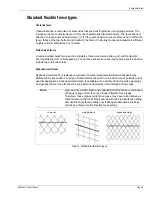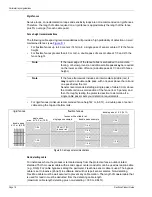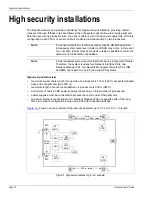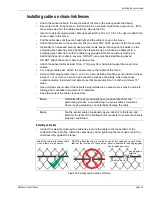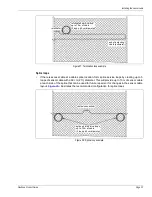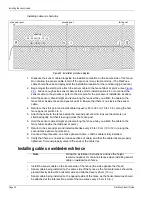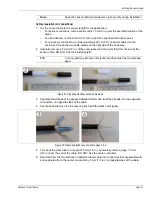
Perimeter layout guidelines
Page 22
FlexZone Product Guide
Alarm communication options
•
contact closure alarm communications (local control mode) up to 8 distinct alarm zones per
processor (requires optional ROC)
•
built-in data communication network, secure data passes between processors over the sensor
cables (one or two processors must have a Silver Network connection to the NIU.)
•
Silver Network data communications are daisy-chained to each processor around the
perimeter using either EIA-422 copper wire data paths or fiber optic cable (Silver Loop)
•
Silver Network data communications are via Ethernet to each processor using category-5
cable and a PoE switch (Silver Star)
Fail-safe relay operation
In the default configuration, the processor’s relays operate in fail-safe mode. During normal
operation, the relays latch in the non-alarm state. In the event of a total processor failure all relays
switch to the alarm state. Relays 1 and 2 indicate fail and supervision conditions and relays 3 and
4 report sensor alarms.
Relay Output Card
The relay output card (ROC) (P/N 00BA2500) includes four relays to supplement the four relays
available on the processor. In remote control mode, the host security management system
operates the ROC’s relays, as output control points, (e.g., to activate lights, doors, sirens, CCTV
equipment, etc.). You can configure the relays as latching (ON by command, OFF by command),
in flash mode (ON-OFF-ON-OFF, etc. by command, then OFF by command), or pulse mode (ON
for a period, then OFF). For flash and pulse modes, the Active/Inactive times are selectable.
Dry Contact Input Card
The dry contact input card (DRIC) (P/N 00BA2400) includes four inputs to supplement the two
inputs available on the processor. In remote control mode, the DRIC’s inputs connect auxiliary
devices to the host security management system (e.g., to report the status of other security
equipment such as a microwave or magnetic contact). The Filter Window parameter allows you to
set the time period for which an input must be active, before an event is reported.
Data over the sensor cables
A group of FlexZone processors can communicate via the connected sensor cables. In this case,
at least one processor requires a network interface card (NIC) to enable Silver Network
communications. The sensor cables from that processor are connected to the two adjacent
processors (one on each side). Processors that are using the sensor cables for data distribution
must be synchronized to prevent mutual interference.
To take advantage of the Silver Network’s redundant communications capability, two of the
connected processors require NICs and connections to a Network interface unit (NIU). In this way
network communications will travel in both directions over the sensor cables, so that a single break
in a sensor cable will not interrupt communications.
Note
You can use a combination of the above methods for powering and
data communications.
Note
A Silver Network based processor can use local control mode to
operate its output relays and Aux inputs.


